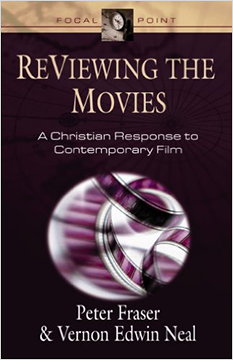
Film is one of the most powerful influences in society. If we see movies as either “harmless entertainment” or “completely corrupt,” we miss an opportunity. One view excludes a greater understanding of our culture. The other lets ungodly values become part of our society. “A film not made solely by or about Christians can still be uplifting and connect with us spiritually – as long as it conveys truth and cinematic excellence.” We need tools to determine how a movie meets that qualification. Using a wide range of examples from cinematic history, Pete points out how a film is created, “what the story line means for its effectiveness” and how films impact society. We embrace the idols of the crowd – led by cultural convention. We see the same movies, read the stories of the stars in the popular rags, await the promotions, applaud the same awards and see the trailers on TV. Pete taught a student who had seen Titanic (rated as a C+ movie) seven times.
What attracted the student to the movie? The visuals were great – some scenes beautiful. After that, Pete ran out of good explanations on her attraction to the movie and started thinking of possible bad ones (“Seven viewings, after all.”) “She wants that self-confidence and brashness that throws the most precious jewel in the world into the sea. She finds Leonardo DiCaprio attractive. She wants an artist to sketch her in the nude.” Actually, the only person who would see a film like Titanic seven times is a person who wants to be part of that world. The messages in “the films out there” both explicit and implicit leave us with a collective lack of the ability to evaluate and understand the art of film. “It’s acceptable to see Titanic seven times because it’s about nice people having illicit sex. The problem in America can be blamed in part on how we have been trained to think about religious issues.” George Marsden documented the history of the schism between Christianity and the subjects we study in school. He opened his argument with the observation in “The Outrageous Idea of Christian Scholarship” that Contemporary University is hollow at its core.
“One of the best films of the last two decades is a Canadian production directed by Bruce Beresford, entitled Black Robe (1991). It contains scenes of graphic violence and three scenes displaying sexual activity; yet it is one of the most provocative films ever made about the challenges of Christian missionary work. The story is based on a novel drawn from the diary of Noel Chabanel, a martyred 17th century French Jesuit priest who gave his life to bring Christianity to Indians in Canada.
“I showed this film in a course in a Christian college once and received an angry letter from a female student who said that I had corrupted the innocence of her mind by having her see a film with sexuality that was not ‘Biblical.’ The irony was that the she admitted to having willingly seen two gems of ‘innocence’ and purity, Pretty Woman and Flashdance.”
“The temptation is to think that the student didn’t like the sexuality in Black Robe because it involved American Indians in a smoky teepee, rather than Julia Roberts in a glittering American hotel room. But on reflection, a better conclusion is that in the mind of many like this girl, Pretty Woman and Flashdance are just ‘entertaining and fun,’ while Black Robe is thoughtful and serious. The rules that apply to the one don’t fit the other. This is compartmentalization of the worst kind.”
Excerpted from Reviewing the Movies, by Peter Fraser, Chair of the Dept of English, Wisconsin Lutheran College. Dr. Fraser received his Ph.D. In Literature with a specialization in Film and Popular Culture from the University of Illinois-Chicago. He is a Staff Minister at St. Marcus Lutheran Church.
